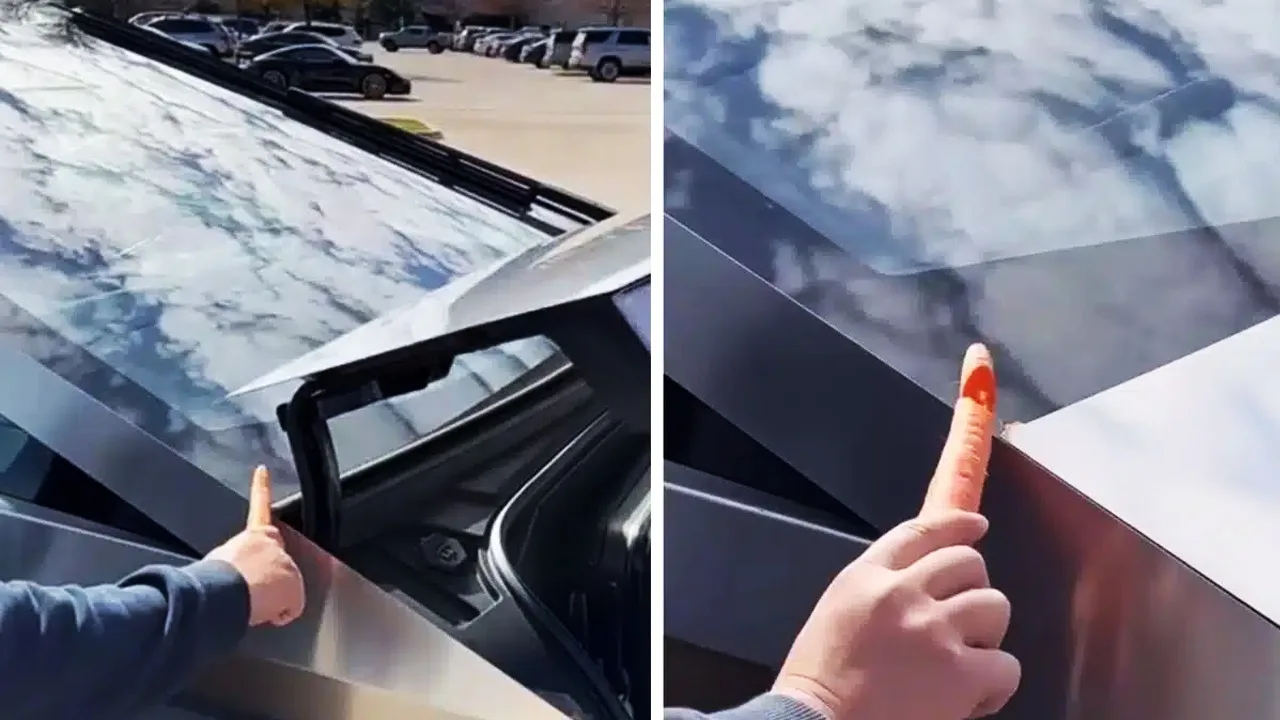The distinctive design of the Tesla Cybertruck has triggered safety discussions, primarily revolving around its sharp edges, a concern that gained attention in a recent demonstration featuring a seemingly harmless carrot on the vehicle’s trunk hood.
While Tesla vehicles are generally acclaimed for their robust safety features, the Cybertruck’s unique design, including its angular edges, has raised questions about its potential safety risks. The carrot test, where a carrot was seemingly unable to pierce the vehicle’s exoskeleton, has brought these concerns to the forefront.
Design Language
The Cybertruck boasts an ultra-hard stainless-steel exoskeleton designed to minimize dents, damage, and long-term corrosion. Repair processes are touted to be simple and swift, aligning with Tesla’s commitment to practical solutions. Additionally, the vehicle features Armor Glass capable of resisting impacts at high speeds, equivalent to a baseball at 70 mph or class 4 hail. The inclusion of acoustic glass contributes to a quiet cabin environment, likened to the silence of outer space.
Despite these safety features, the recent carrot test has sparked a fresh wave of discussions regarding the Cybertruck’s design and its potential implications for pedestrian safety. As Tesla continues to innovate, the focus on safety remains paramount, with ongoing evaluations and discussions shaping the narrative around the Cybertruck and its unique attributes. Source
